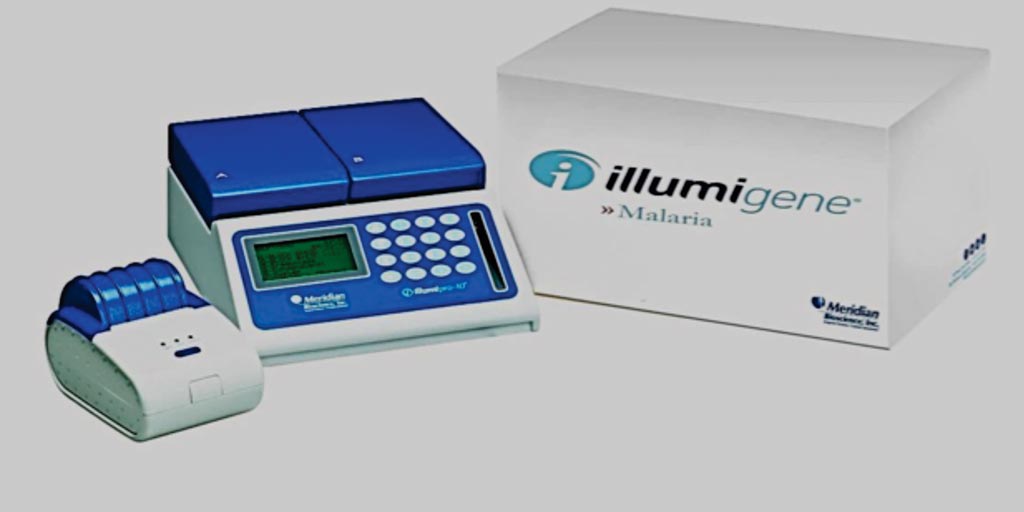LAMP Malaria Assay Evaluated in Non-Endemic Setting
By LabMedica International staff writers
Posted on 02 Nov 2017
Imported malaria infections in non-endemic regions remain common due to increasing travel to endemic malaria areas and population movements. Yearly approximately 10,000 cases of imported malaria are reported, but the actual number may be as high as 30,000.Posted on 02 Nov 2017
Light microscopy and antigen-based rapid diagnostic tests are the primary diagnostic tools for detecting malaria, although being labor-intensive and frequently challenged by lack of personnel’s experience and low levels of parasite density. The latter is especially important in non-endemic settings.

Image: The illumigene malaria DNA amplification assay (Photo courtesy of Meridian Bioscience).
Scientists at Ghent University Hospital (Ghent, Belgium) assessed the diagnostic performance of a malaria assay compared to microscopy, rapid diagnostic test (RDT) and real-time polymerase chain reaction (PCR). A panel of 103 stored EDTA-anticoagulated venous whole blood diagnostic samples obtained from international travelers, collected from June 2015 to June 2016, and 12 external quality control (EQC) samples were analyzed.
The objective of this study was to assess the diagnostic performance of the illumigene malaria assay, which is a qualitative in vitro diagnostic loop-mediated isothermal amplification (LAMP) test for the direct detection of Plasmodium spp. DNA in human venous EDTA whole blood samples. The assay targets a region of the Plasmodium genome that is conserved across P. falciparum, P. vivax, P. ovale, P. malariae and P. knowlesi, which is a 214 bp sequence of the Plasmodium spp. mitochondrial DNA noncoding region. The assay does not distinguish between the different Plasmodium species.
The team reported that, the illumigene assay showed 100% agreement with the real-time PCR, RDT and microscopy yielding a sensitivity and specificity of 100%. Seven samples from patients recently treated for Plasmodium falciparum infection that were RDT positive and microscopy negative yielded positive test results. The performance of the illumigene assay equals that of microscopy combined with RDT in the prospective panel with three false negative RDT results and one false negative microscopy result. Excellent concordance with PCR was observed. The limit of detection of the assay approached 0.5 parasites/µL for both P. falciparum and P. vivax.
The authors concluded that in non-endemic regions where the diagnostic process for malaria infections is questioned by lack of experience and low levels of parasite densities, the illumigene assay can be of value. Due to its high sensitivity, the LAMP assay may be considered as primary diagnostic test. The study was published on October 17, 2017, in the Malaria Journal.
Related Links:
Ghent University Hospital













